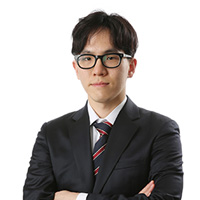Seoul to pour more money to nurture local materials, parts industries
By Shim Woo-hyunPublished : Nov. 17, 2021 - 18:21

South Korea will spend 20 billion won ($16.9 million) next year to nurture local industries for materials, parts and equipment for chips, future cars, bio products and nanotechnologies, officials said Wednesday.
Finance Minister Hong Nam-ki, unveiling a road map to identify and strengthen the weakest link in the country’s industrial value chain, said if all goes as planned, the country will see a drastic decline in imports of essential parts and equipment in backbone industries.
“By 2030, our dependence on imported parts will be reduced to 34 percent from the current 84 percent, and this will lead to replacement of imports worth some 1.8 trillion won by local goods,” he said.
He also said the latest supply shortage of urea solution reinforced the need to preemptively manage risks in global supply chains. In the past few weeks, a sudden drop in China’s urea exports to Korea sparks a shortage of urea solution essential for diesel engines here, prompting drivers to panic buying.
Included in the road map unveiled Wednesday is a plan to drastically increase state funding for labs and research centers in order to secure core technologies to localize essential materials, parts and equipment for strategic industries, officials said Wednesday.
According to the Ministry of Science and ICT, which has prepared the research support project, 100 new materials technology labs and another 100 new research centers will be established by 2025.
The government has so far identified 65 research items in 10 different fields, including smart mobility, telecommunications, quantum computing, 3D printing and green energy.
It will also increase investment in the development of materials for extreme environments in a bid to nurture the country’s space tech industry and other sectors that use special materials, the ministry added. Starting in 2022, the government also plans to introduce artificial intelligence-based robots at research centers.
The road map is a continuation of South Korea’s effort to bolster the materials, parts and equipment industries, which started in 2019 in response to a trade conflict with Japan.
In thinly veiled economic retaliation, the neighboring country imposed restrictions on exports of key items to Korea, including three materials critical for the production of semiconductors and display panels.
Investments in the materials, parts and equipment sectors have increased dramatically since Japan’s export ban. In 2021, the state budget set aside for those sectors was 2.1 trillion won, marking a twofold increase from 2019.
While the effort so far was more of a quick remedy aimed at localizing Japanese or other foreign technologies critical to core local industries, the latest program aims to advance the country’s research and technology capacity to lead industries of the future, Science Minister Lim Hye-sook explained.
(ws@heraldcorp.com)




![[Weekender] Korea's traditional sauce culture gains global recognition](http://res.heraldm.com/phpwas/restmb_idxmake.php?idx=644&simg=/content/image/2024/11/21/20241121050153_0.jpg&u=20241123224317)












![[More than APT] Residents, architects together design homes](http://res.heraldm.com/phpwas/restmb_idxmake.php?idx=652&simg=/content/image/2024/11/24/20241124050036_0.jpg&u=)
